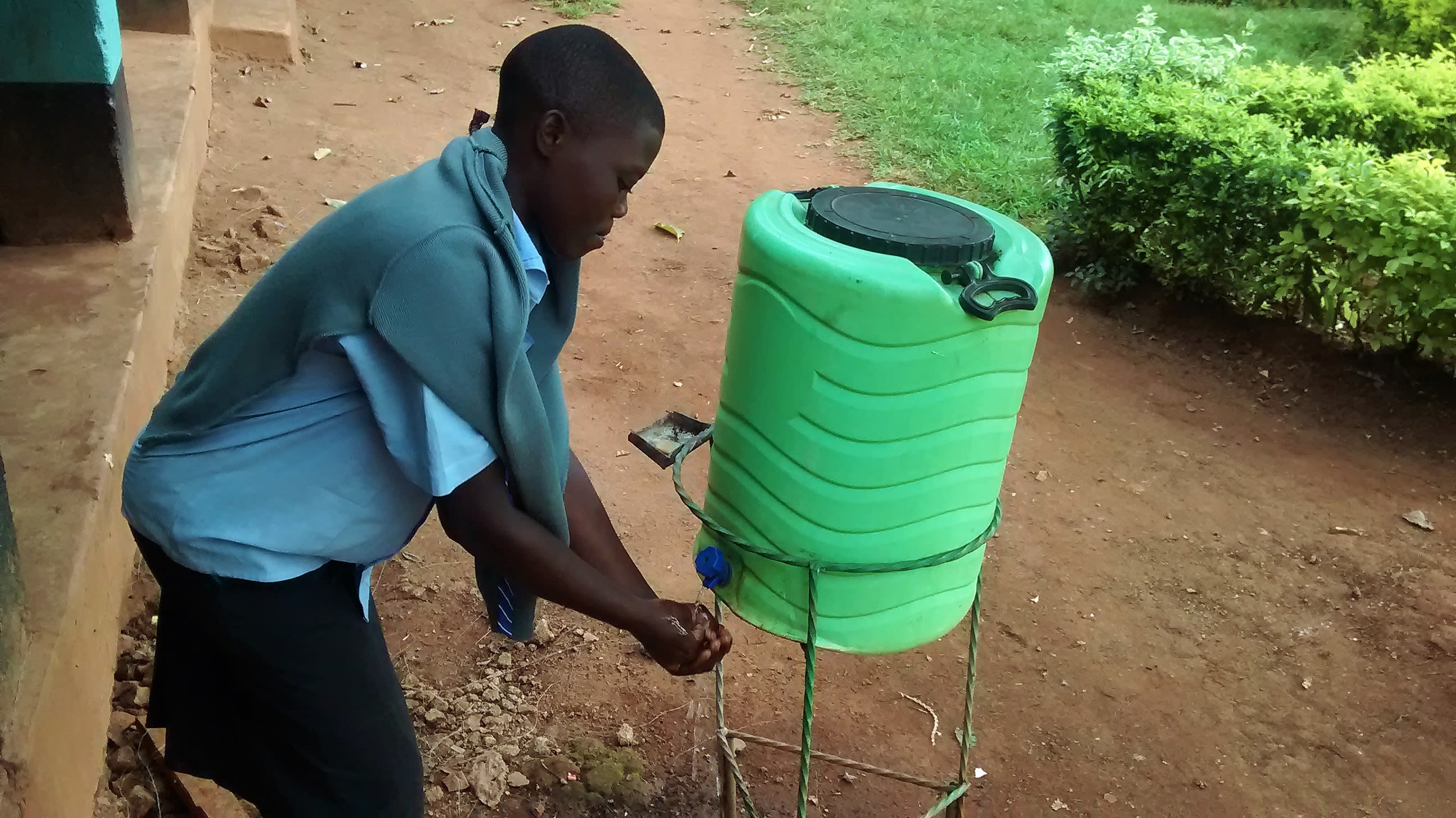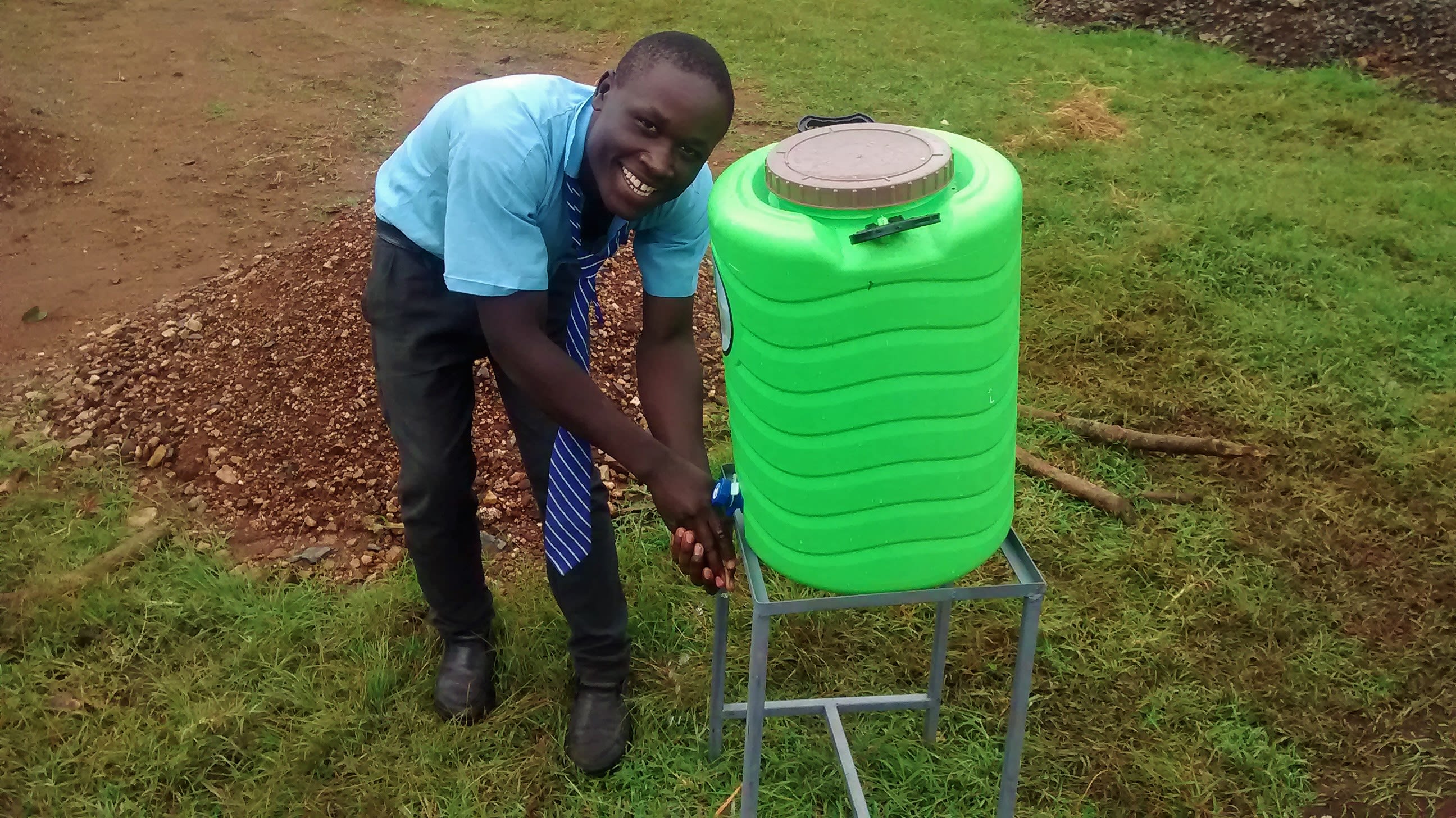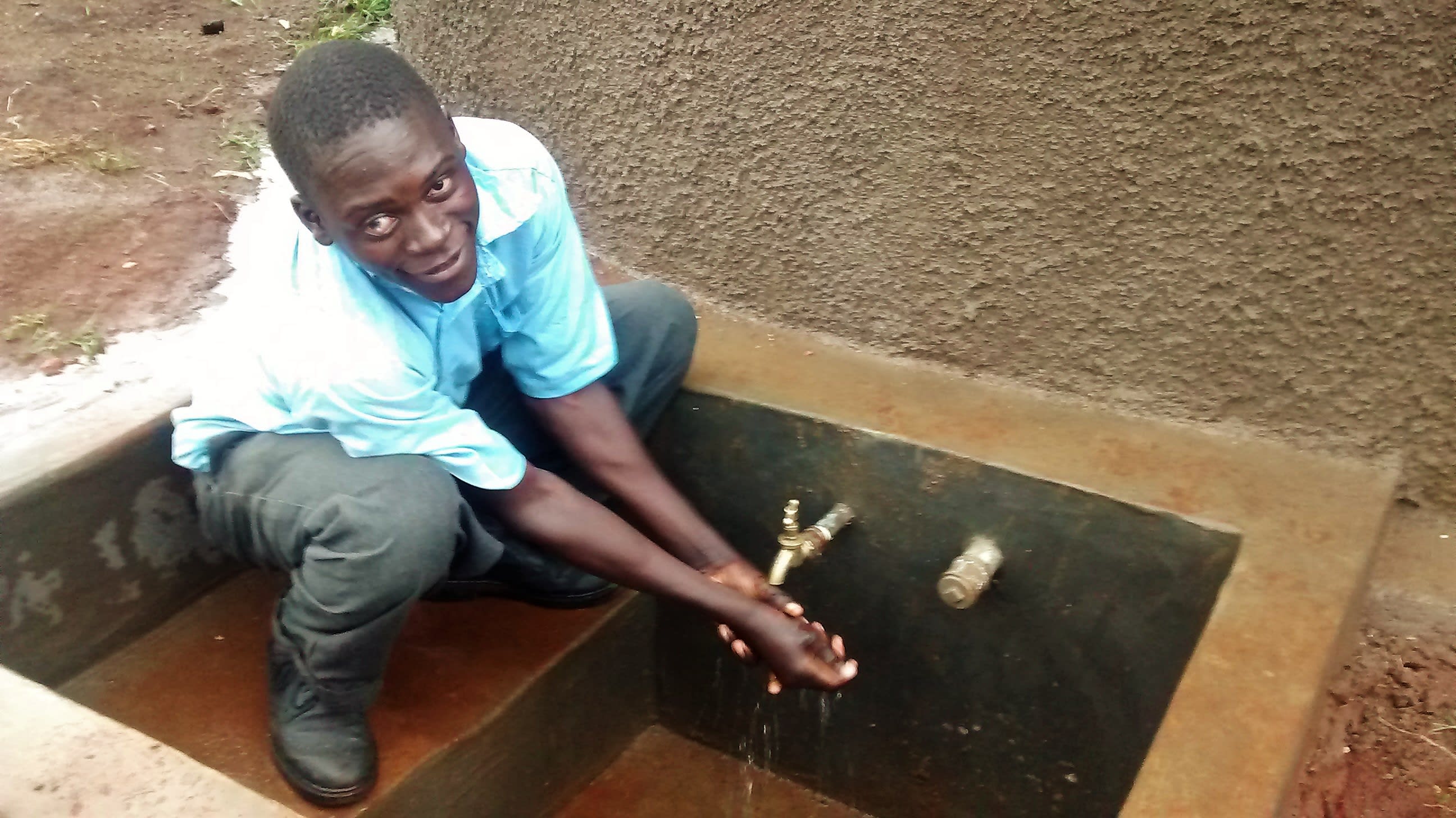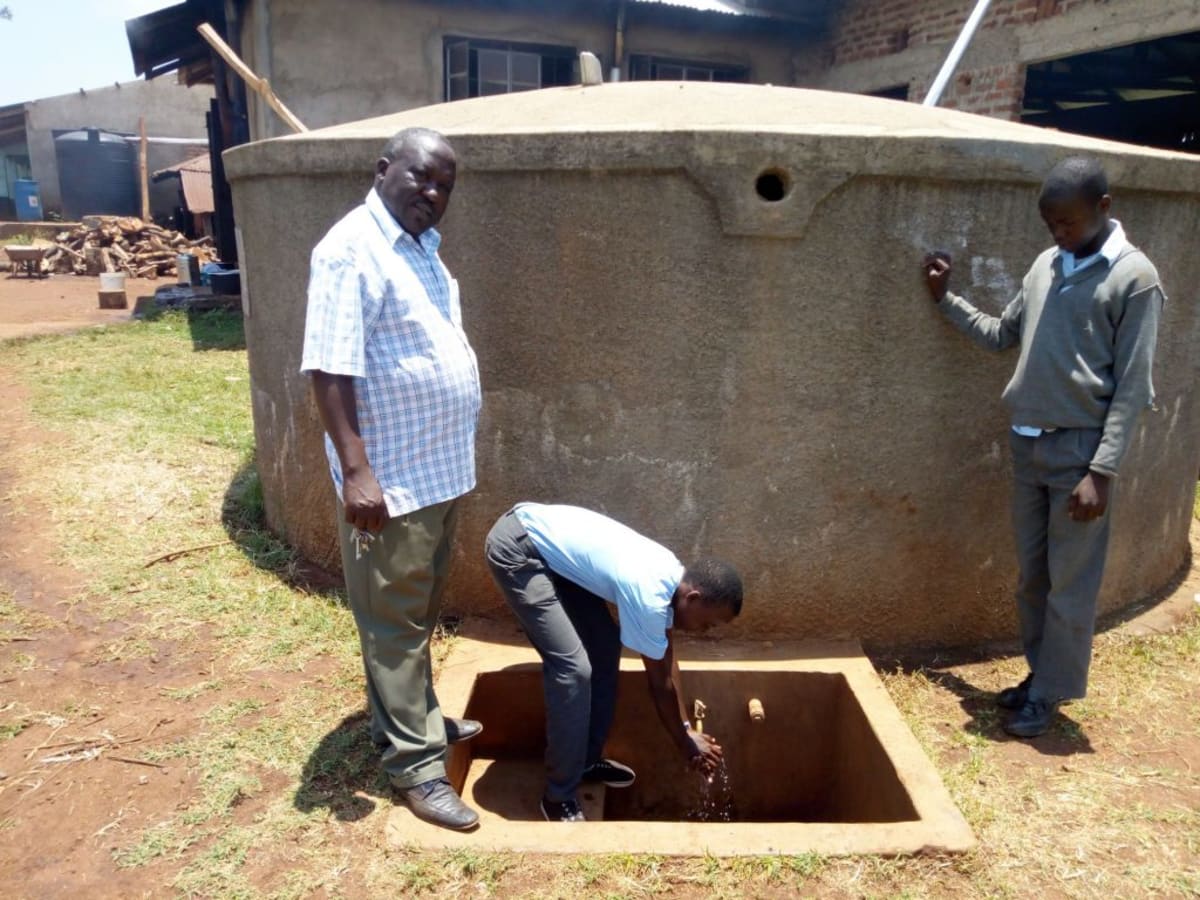This project is a part of our shared program with Western Water And Sanitation Forum (WEWASAFO). Our team is pleased to directly share the below report (edited for clarity, as needed).
Welcome to the School
The Ebukanga Secondary students must report to school by 8AM on Monday, Wednesday, and Friday, but many arrive earlier to study. On the remaining week days, normal classes start at 7AM. Lunch is from 1-2PM, and afternoon classes go until 4:30PM.
Most students come from very poor households who cannot afford school fees. To help, school administration decided to accept any form of payment: trees for firewood, beans, maize, and chickens are common items given to the school. Local political leaders have also invested as much as they can; there is a Constituency Development Fund (CDF) that has paid for painting classrooms and building a dining hall. A member of the Kenyan Parliament is also helping by supplementing children's school fees, which in turn helps pay the teachers' salaries. This same member of parliament has donated 10 desktop computers so that students can learn basic skills.
Principal Jeremiah Andayi told us that his goal is "not to force every students to get grade A by the end of their learning, but to grant every needy child a chance to go through the education system and change their destiny for the better." However, there is a severe water shortage that impedes this goal.
Water Situation
The school purchased a 6,000-liter plastic tank to catch water when it rains. But between cooking, drinking, cleaning, and science lab, a full tank is barely enough for one day of school. When emptied, the tank acts as storage for water fetched from other sources. To keep students from having to leave school during the day, the principal decided to pay people to deliver buckets of water. These people collect water from nearby sources, most of which are open springs. There's no way for the school to know if the water they are receiving is safe.
At least 1,000 shillings a day are spent to buy water, but this isn't enough. Principal Andayi said that "students fight over water, and others dip their dirty utensils into the common source as they draw it for drinking purposes. We sympathize with them and simply say 'water has no bad heart.' We live by the grace of God. Because of water shortages, some students leave their utensils unwashed and still use them during the next meal."
Sanitation Situation
There are six pit latrines, all of which are dirty, smelly, and clogged up. In a couple of latrines, students had even missed the hole in the floor.
There is only one hand-washing station set aside for almost 500 people, but it is rarely filled with water.
The school and its students do their best to keep the compound and its classrooms neat, and the cooks wear appropriate clothes to keep the food clean. With an adequate water source on school grounds, students will be able to wash their hands, wash their utensils, and keep their environment clean.
Plans: Hygiene and Sanitation Training and Hand-Washing Stations
Training will be held for two days. The facilitator will use PHAST (participatory hygiene and sanitation transformation), ABCD (asset-based community development), CTC (child to child), lectures, group discussions, and handouts to teach health topics and ways to promote good practices within the school. The CTC method will prepare students to lead other students into healthy habits, as well as kickstart a CTC club for the school. This CTC club will oversee the new facilities, such as hand-washing stations, and make sure they are kept clean and in working condition. The two hand-washing stations will be delivered to the school, and the club will fill them with water on a daily basis and make sure there is always a cleaning agent such as soap or ash.
Plans: VIP Latrines
Two triple-door latrines will be constructed with local materials that the school will help gather. Three doors will serve the girls while the other three serve the boys. And with a new source of water on school grounds, students and staff should have enough to keep these new latrines clean.
Plans: Rainwater Catchment Tank
A 50,000-liter rainwater catchment tank will help alleviate the water crisis at this school. The school will also help gather the needed materials such as sand, rocks, and water from the spring for mixing cement. Once finished, this tank can begin catching rainfall that will be used by the school’s students and staff. Water of unknown quality will no longer be paid for by the school, for they will soon have safe water at their doorstep.
We and the school strongly believe that with this assistance, standards will significantly improve. These higher standards will translate to better health, better academic performance, and a better quality of life.

 Rainwater Catchment
Rainwater Catchment
 Rehabilitation Project
Rehabilitation Project

































